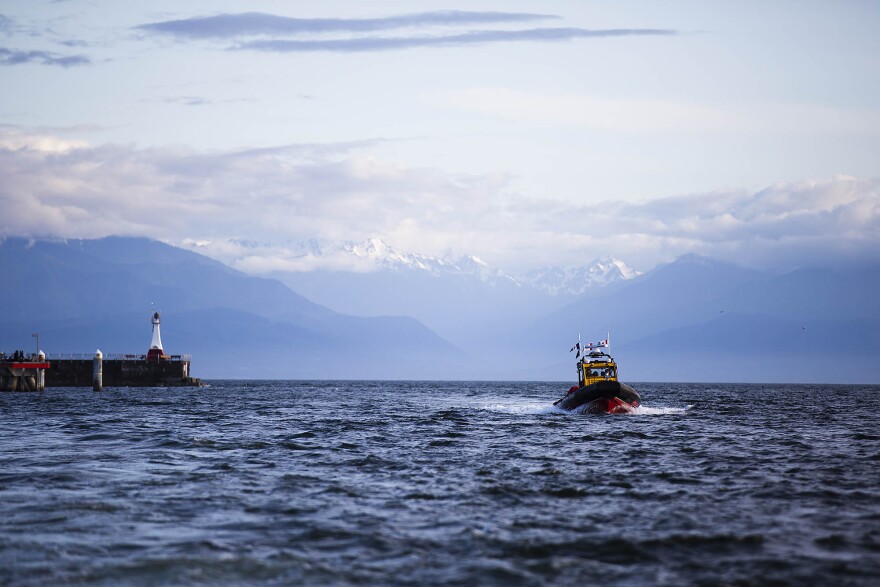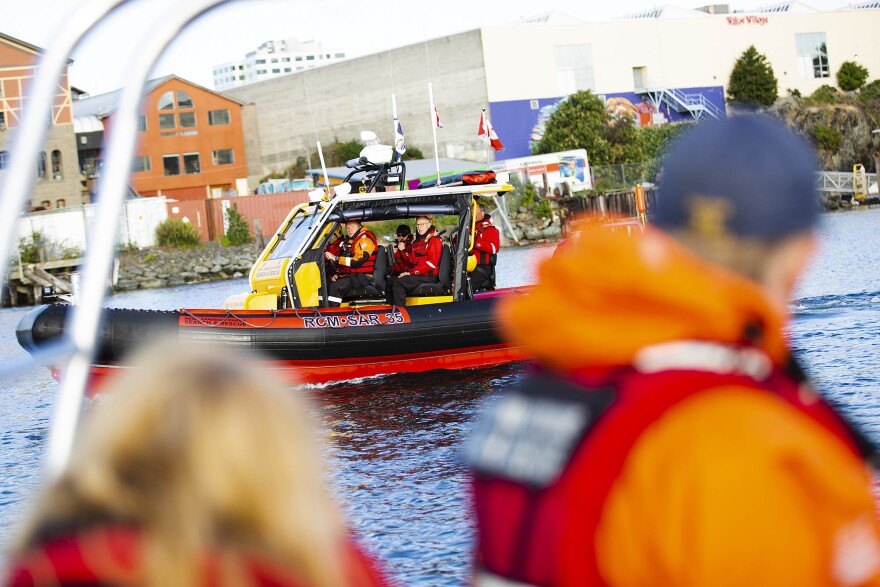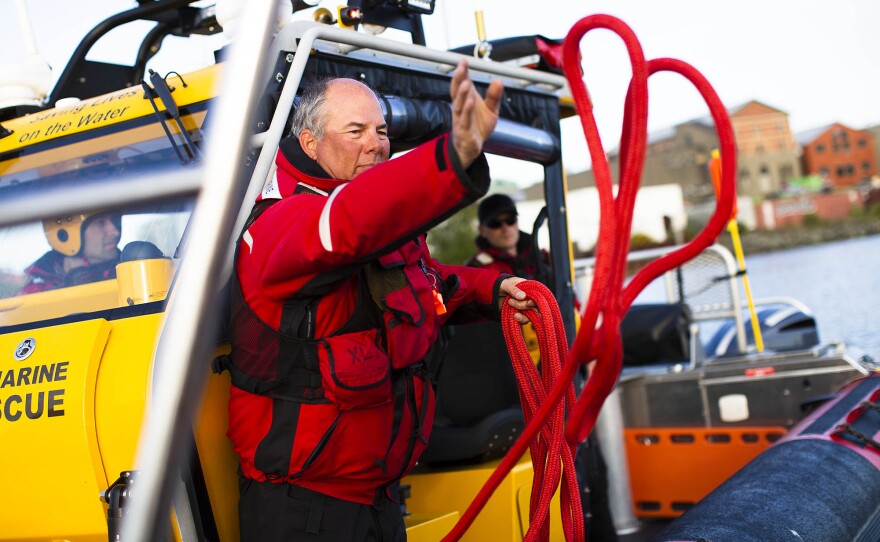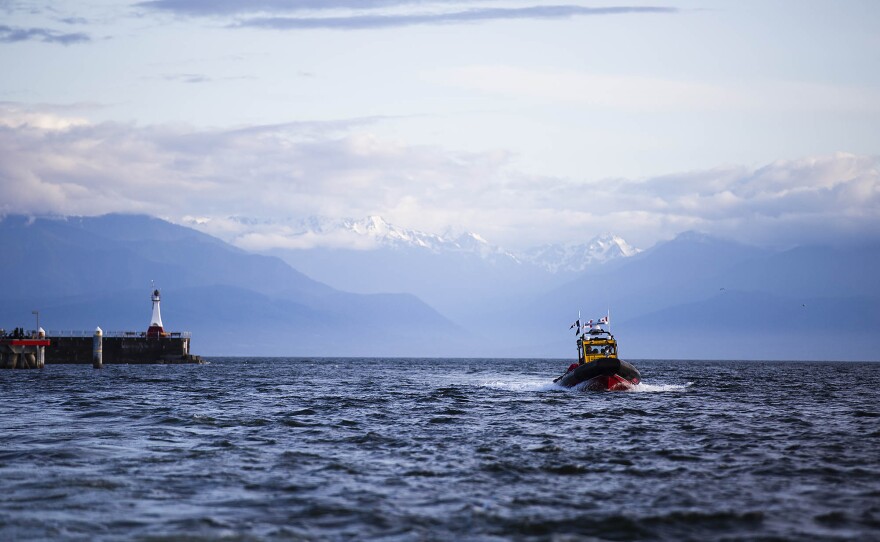Separated by a ferry ride and an international boundary, Port Angeles and Victoria have a few things in common.
Both are port cities oriented around the water. Both cities have stunning views and a quirky vibe that attract many visitors.
Both cities are also Coast Guard outposts in their countries. That's likely a comfort for those who spend time diving or boating in the straits separating Port Angeles and Victoria. But in practice, it looks a little different.
The U.S. Coast Guard is part of the military. In addition to policing the laws of the water and keeping guard over international boundaries, a big part of their mission is marine search and rescue.
The Canadian Coast Guard is also tasked with marine search and rescue. But it's not a military agency, which means the work is distributed somewhat differently.
Take the Royal Canadian Marine Search and Rescue Station 35 in Victoria. Every person in their 18-member crew is a volunteer.
"It's always a struggle to keep people, keep the station stood up, keep people trained. You know, you lose people to jobs. They move across the country to have a wife and kids, so it's hard to maintain a full crew, but we manage to do it," said Deputy Station Leader David Best.
The station is considered part of a Coast Guard Auxiliary. The crew has to follow the agency's practices, and they're held to Coast Guard standards. But they don't get paid to be on call 24/7 or for the hours and hours of training they have to do.

Vancouver Island, where Victoria is located, has no road access to mainland Canada, so keeping people safe on the water is a regular concern. There are more than 30 marine search and rescue stations in British Columbia.
"We are pretty much 911 for the water," Best said. "There's a lot of responsibility with that. There's a lot of people that rely on us."

U.S. Vs. Canada
Across the water, the U.S. Coast Guard Air Station in Port Angeles has many of the same concerns as Station 35. But there are also clear differences.
The two units are responsible for different amounts of water. Station 35 covers from the harbor, to the southern tip of the island, and out to the U.S. border. The air station's range is bigger.
"We're responsible for the entire area of Puget Sound, Strait of Juan De Fuca, and all the way down to about La Push, I believe," said Lt. j.g. Kelcey Smith, a search-and-rescue pilot.
The helicopters are another difference. The crew at Station 35 is made up entirely of mariners. The Canadian Coast Guard, along with the Navy and Air Force, do have choppers that can be used on search-and-rescue missions, but that isn't their primary purpose.
The number of pilots at the air station is about the same as Station 35's crew, 16 to 18, Smith says. But the Coast Guard outpost in Port Angeles has several boats, so the ultimate number of members who can respond to a call can vary.
"I know that we have about 140 to 300 members depending on if the boats are in or not here at the station Port Angeles," Smith said.
Another major difference is funding. Almost everything at Station 35 is funded through donations.

They hold events like "dinner on the docks" and online auctions with items donated by local businesses.
Best, the deputy station leader, gestures to their newest red and yellow rescue boat, the second in their employ.
"That's $400,000," he said. He points to his orange dry suit and vest packed with gear. "What I'm wearing right here is about $2,000 of gear. There's another $2,000 of gear," he said, pointing to one of his colleagues.
'You Actually Do Save Lives'
Differences aside, many of the same things came up in conversations on both sides of the border. Both talked about how quickly the weather can turn in the straits. They also had a lot of advice for casual boaters, especially kayakers. They talked a lot about wearing the right gear and learning how to talk on the radio.
Station 35 crew members said learning those skills was one of the biggest benefits to joining, making it worth giving up many hours of their time. They also like getting to drive some very fast boats.
But Smith, the U.S. Coast Guard pilot, can see there's more to the story.
"I think that just goes above and beyond and says a lot about who they are," he said of the Station 35 crew. "Because we get paid. We get time allotted to do this. This is our job, whereas...they're taking time out of their day to do this, which I think speaks a lot to their character."
As the sun sets in Victoria Harbour, Station 35 crew members tell a story about how they worked with another Vancouver Island station to rescue nine divers whose boat capsized.
"In the case of the water here, people can easily be lost," Best said. "It takes a whole bunch of people, a whole bunch of equipment, a whole bunch of systems put in place to do everything they can do to find that person."
Station 35 Media Officer and crew member Jackie Cowan echoed those sentiments.
"What I really do get an incredible amount of satisfaction from is that you actually do save lives," she said.
The straits between Port Angeles and Victoria are assuredly safer having people like Cowan, Best and Smith in the air and on the water. But hopefully you never run into them.








